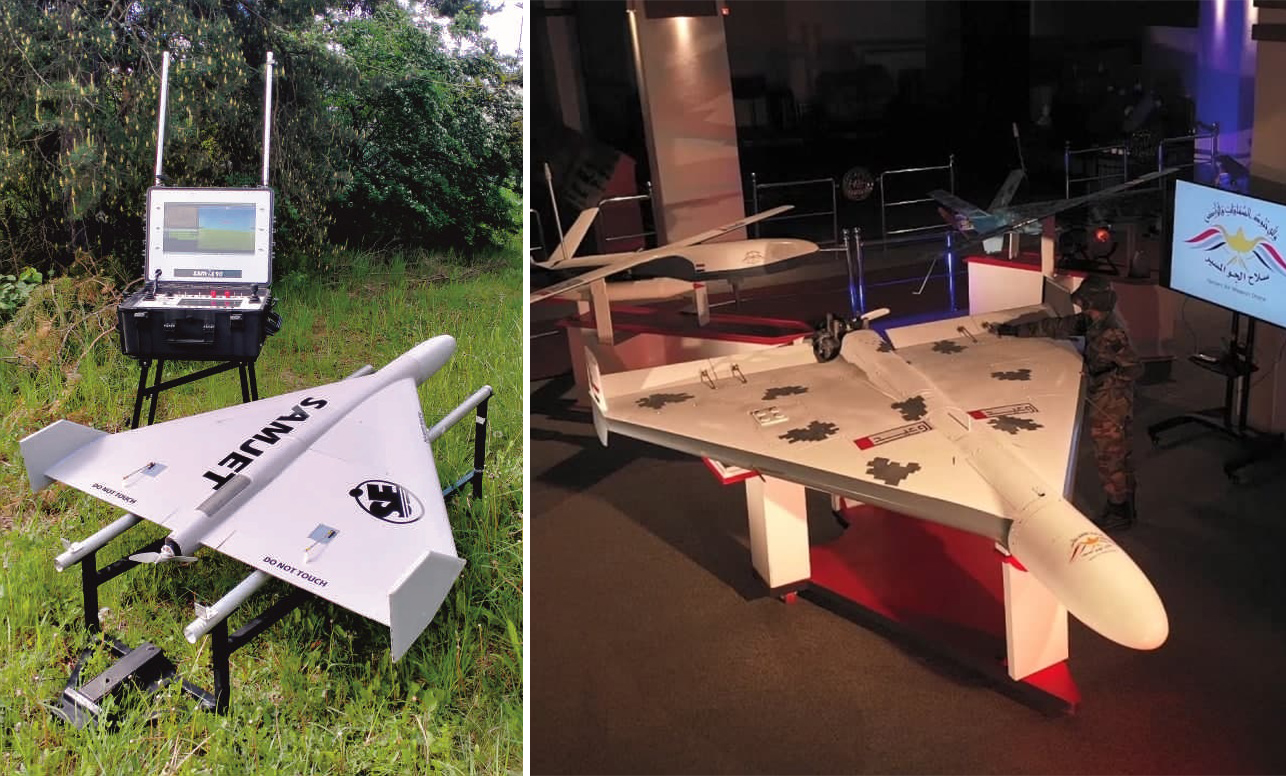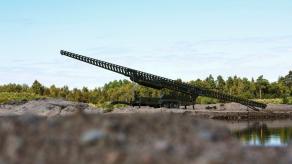Until this moment, Bulgaria wasn't notable for making any types of drones but nonetheless it has created an interesting product named Samjet. It's a suicide attack UAV developed by defense enterprise Samel-90 in cooperation with Swiss ALIDRONE SAGL, and presented the other day.
This killer drone (otherwise known as loitering munition) was developed primarily in the interests of the Bulgarian armed forces to provide them with "accurate and rapid strike capabilities", as noted by Defense Romania. But one can easily notice a striking visual resemblance to Iranian Shahed-136/131.
Read more: With Chinese Help, russia is Working to Turn Shahed-136 into a Lancet-Type Loitering Munition (Document)

Samjet does indeed have similar looks and the same launch method: using a solid-fuel booster and a catapult. But what's no less interesting about this drone is the fact its development remained out of the public eye until now, the Bulgarian defense industry did not advertise their project at all.
Only the key specifications of Samjet are disclosed: the flight speed is 120 to 250 kilometers per hour, and the operational range is outlined as "several hundred kilometers" but the manufacturer also notes the drone has an endurance of 60 to 120 minutes. The warhead weight is only 5 kg. The drone's maintenance is quick and easy, and it has an "intuitive interface," which makes it flexible to use in various combat conditions and environments. Specifically mentioned the low cost of its production.

Apart from that, a fundamentally important thing is claimed about Samjet's design: the presence of a three-axis gyro-stabilized camera, allowing the operators to track targets in real time, even in difficult weather conditions. That makes the Bulgarian product conceptually different from the Iranian Shahed which only relies on internal guidance systems and has no remote control function; it also adds the reconnaissance role to Samjet's repertoire.
Now to the interesting part. Seeing this development being so similar to the infamous Shahed, the question logically arises if there's any connection between the two. While the official data is lacking, the following conjecture suggests two possible options.
One is that representatives of Bulgaria, being a country that provides military aid to Ukraine, could gain exclusive access to the wreckage of Shahed-136/131 drones shot down during russia's regular long-range attacks on Ukrainian cities. Iran both supplies the russians and helps them establish local production, so there's plenty of study material downed by Ukrainian air defense. Based on these insights, Bulgarian manufacturers could have integrated some of the design solutions in their project.
Alternatively, the engineers from Samel-90 intuitively copied the external design from Shahed, while on the inside, it's an entirely different system. After all, the most important part is the type of engine it uses, which remains unknown. For a reminder, the Shahed-136 utilizes the MD-550 of either Iranian or Chinese production, basically a reverse-engineered copy of the German L-550.

Worth noting, this airframe configuration is quite common for small-sized UAVs and while Shaheds have shown all the pros and cons by giving much raw study data in Ukraine, there are other developments based on the "flying wing" layout with rear propeller and winglets. For example, the Chinese TD2000 High-Speed Target Drone from MicroPilot UAV Flight Control Systems is regularly used for training units of the People's Liberation Army.

Read more: Gerbera, the New russian Foam Plastic Killer Drone, Showcased in Detail (Video)














